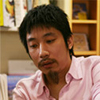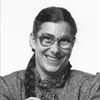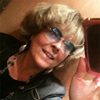|
 |
|
Editor's Note: Organizers of the exhibition have chosen the theme “Is the world real?” in hopes of displaying, through the works here, how these photographers have penetrated language in their own unique ways to re-constitute a freer, more intense, more meaningful world. |
|
News |
|
Narrowing the focus for a look at Lianzhou |
|
Baudrillard to headline Lianzhou Photography Festival's quality focus |
|
With the theme Is the World Real?, the scale of this year's Lianzhou Festival will be largely downsized and aims to offer audiences high-quality exhibitions, said Duan Yuting, artistic director of the festival.[Full text] |
|
Capturing the real world The real world on film |
|
Tip of the iceberg |
|
 |
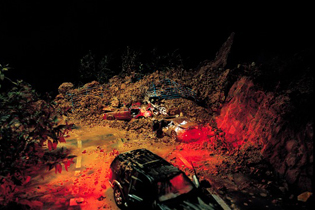 |
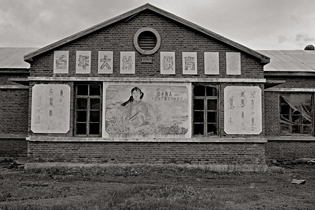 |
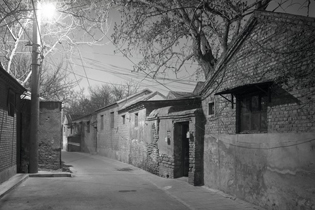 |
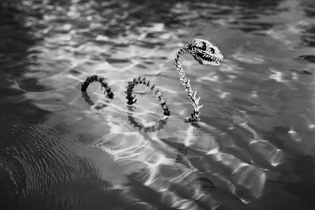 |
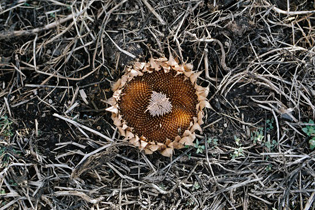 |
|
|
|
|
|
Current curators |
|
Duan Yuting (Director) Dedicated in curatorship, spreading and promotion of China’s contemporary photography and management of art projects and galleries. June,1996 to April, 1998, hostess of the column of “Photographer Interview” and editor of theory edition of People's Photography; 1998 to 2005, photo editor and photo chief director for New Express under Yangcheng Evening News Group; August 1998, planning and organizing South China Press Photo Advanced Seminar; 2000, compiling Chinese Story, a great realistic photographic book reflecting living status of all walks of life of China in the 20th century's; 2001 to 2003, taking a 3-year Chinese Master Course as a member chosen by World Press Photo; 2005, initiator and curator of Lianzhou International Photo Festival as project and art director; 2005 end, chosen as Top Ten Character of China Photography of the Year; January 2006, curator for “Ever-Changing Fragrant River”--Qiu Liang Solo Exhibition, Guangdong Gallery; January, 2006, curator for “Chairman Mao in My Lens” --Lv Houmin Solo Exhibition, Guangdong Gallery; February 2006, curator for Moscow Photo Festival; March 2006, attending Oracle (an international organization of museums of photography) Conference as representative for China Photo Festival invited by FotoFest; May 2006, special curator for “China Photography 50 Years” - Large Retrospective Exhibition; November 2006, invited judge for FOTOBILD, Berlin, Germany; January 2007, invited curator for Chinese Work in Paris Photo Biennale; 2007, member of review panel for Rhubarb-Rhubarb, Birmingham, UK; 2007, member of review panel for FOTOBILD, Berlin, Germany.; April 2008, member of jury ot the 1st Thessaloniki PhotoBiennale 2008, Greece. May 2008, Reviewer for FOTOBILD Berlin. May 2009, Reviewer for China Photography Awards; Sep. 2009 & Sep. 2010, Judger for Southern Porket Film Festival. July 2010 , Jury for Photography Talent Award, France. |
|
The most important contemporary art critic and independent curator, since the eighties, Fei Dawei has devoted into the work on promoting Chinese contemporary art and also introduced Chinese contemporary art to the world as well as made a great contribution to create a dialogue between the world of Chinese art and that of the West. 1954, born in Shanghai, China; 1985, graduated from the Beijing Central Academy of Fine Arts with a Bachelor’s in Arts, majoring in History of Art; 1985-1989, editor of the Fine Art Research magazine of the Beijing Central Academy; 1986, invited to work with the Department of Plastic Arts of the French Ministry of Culture as a visiting scholar First introduced Chinese contemporary art to a worldwide audience; 1987-1989, advised the curators of the Magiciens de la Terre exhibition at the National Museum of Contemporary Art in Paris, France (also known as the Centre Pompidou) Responsible for the selection of Chinese artists. Since moving to France in 1989, he initiated many exhibition with worldwide influence ,such as "China Tomorrow for Yesterday" (1990 in France), "The Exceptional Passage" (1991 in Japan), "Promenade in Asia" (1994, 1997 in Japan), "In Between Limits ( Korea, 1997), "All Under Heaven" (2004 in Belgium), "The Monk and the Demon" (2004 in France), '85 New Wave "(2007 China)," House of Oracles "(China 2008) etc are marked in the history of art in China; in addition, he engaged in all kinds of academic researches and exchange activities around the world; 1999, was awarded the title of “Chevalier des Arts et des Lettres” (Knight of Art and Culture) by the French Ministry of Culture; 2002-2008, founding director of the Guy & Myniam Ullens Foundation, and planned and established the Ullens Center for Contemporary Art(UCCA)in Beijing 798 Zone; From 2008, becoming an art critic and independent curator. |
|
Bao Dong (Curator) Independent curator and art critic in Beijing. Born in Wuhu, Anhui province in 1979. After graduation from Sichuan Fine Arts Institute with a Master degree in Art History in 2006, he has worked at the Institute of Movie and Media, Chongqing Normal University, Shanghai Duolun Museum of Modern Art, and Iberia Center for Contemporary Art, Beijing. As an art critic, he has published a great many reviews and articles on magazines and publications. He is also frequently invited to many academic forums. |
|
Agnès de GOUVION SAINT-CYR (Curator) Great figure in the world of photography. Agnes has been for over thirty years at the Ministry of Culture responsible for preparing the outline of a policy in favor of Photography. She is now consulting, curator in the world and the author of numerous monographs. It is since 2010 member of the Institut de France, Section Fine Arts. |
|
Marine Baudrillard (Curator) Born in Paris in 1945. Columnist, TV and Artistic Director of several magazines. |
|
Michel Philippot (Curator) Reporter to the Sygma agency for over 10 years. Photo editor for the Gamma agency and then in various magazines – Globe Hebdo, L’ Evénement du Jeudi, VOD, and World 2 for 10 years… it is now a consultant in photography and curator. |
|
Theme--Is the world real? |
|
A return to seeing Photography can be used in the media to address public issues; it can also be used in a photo album to shape personal memory. Photography is often used to prove the objectivity of a thing or momentary event; however, photography is also sometimes used lyrically, imaginatively, or fictively....With respect to photography, a great many uses have been found, and there are countless possible functions yet to come. Like other acts of cultural praxis, photography is an act with social relevance. As a visual activity, photography is invariably situated within visual discourses and prescribed forms. These discourses and forms lead to various uses, and they give rise to various viewpoints on our part. Thus photography is increasingly seen as a tool of representation; more and more we associate it with texts and theories of race, gender, and class, or with historical reality, or with society and politics. Yet seeing in itself is increasingly ignored. Actually, whatever use or conceptual frame it appears in, photography is primarily an act of seeing. Photography's basis of value is determined by seeing, in and of itself. Seeing can be taken on its own inherent terms, because it does not--as many people unthinkingly suppose--merely reflect a certain truth. The truths we perceive have already been influenced, revised, even decided, by seeing. This being so, before we know it, seeing itself supplants those metaphysical notions of truth to become what we are directly concerned with. Thus rather than saying that photography records reality, it would be better to say that it records seeing. For the photographer, reality and seeing are merged into one: the world ends up being the world in a viewfinder or LCD screen, and "truth" only becomes reality when it appears in a photographic print. Of course, not all instances of seeing have value. Most of the time, people are repeating other people's angles; they are seeing according to camera shots lined up by someone else. Thus many of the photographs we see are flavorless, or even repulsive, especially when they flaunt political correctness or adherence to some aesthetic standard. In fact, we hold hopes for photography because it can and should bring out creative ways of seeing. Photography's most important task is to re-vitalize our jaded vision. To restore photography to seeing, that is, to restore the world to representation, is to deliver the world from various caged-in meanings. By suspending the determinate character of things, one restores to them their inherent being. Inherent being is a precondition of freedom, and freedom is what assures the possibility of self-aware seeing. Granted the assurance of freedom, every camera shot should be a creative act of self-aware seeing. Each should provide a springboard by which we can break away from visual discourses and prescribed forms. As for the viewer, his/her task is to see anew, to let seeing make its advent anew, until it is always present. In other words, photography's significance is to let us maintain self-awareness in seeing, and to engage in seeing as a kind of self-awareness. A return to seeing is a return to the reason that photography is an art. |
A thematic statement of the sixth Lianzhou Photography Exhibition Today’s civilization of today has come up against a critical point in its own history. Formerly, humankind went confidently into the world, attempting to master and remake it. Later, an awareness dawned on people that such efforts in themselves were causing them to lose touch with the world, to become daily more distant from the actual world. All the tools which people had invented to master the world were delivering them into another world, a human-created world. This is a world of symbols and language. A world composed of concepts, words and images—relying on high-tech networks—is hemming us in on all sides. A daily onslaught of news and advertising images pervades every corner of our lives, like an enveloping miasma. The more that images proliferate, the less they partake of actuality. The compelling force, the persuasiveness of images gradually drains away. Ultimately people are stifled by the pictures that they themselves manufactured, enslaved by the tools they themselves created. For a long time the field of photography in China was deeply influenced by pragmatism. Language was broken down into two parts, namely form and content, and only when the former “served” the latter could photography achieve legitimacy. Regardless of whether it was in the name of “correct” ideology or in the name of a “rebellion of language,” photographic works were functionally reduced to tools for conveying certain concepts. Thus photography became diagrammatic treatment of concepts; it became a means of incitement. Quality of expression was thrown aside, and photography became a servant, with no dignity of its own. And precisely in this sense, photography created an illusory screen between ourselves and the world. The actuality of the world is called into question, because the world expressed through language is not reliable. The world we see through photography is a filtered world, a partial representation. After the invention of digital technology, photography lost even more of its identity as witness to the actual world. The world became a picture which could be altered at will, and photography became a tool which can be impinge toxically on awareness. Thus the relation between the world’s existence and photographic language has become a paradox that needs to be worked out in current criticism of visual culture. Only the mouse that tied the bell around the cat’s neck can untie that bell. The problems brought about by photography can only be solved by reflectively approaching photographic language. Can photographic language break through the pitfalls that it itself has imposed? Can it bring forth the motivation to keep creating and making discoveries? Can it stir the imagination in broader ways? Can it become open-ended language which points toward expansive possibilities of meaning? Can its it be in alignment with the world rather than at odds with it? We have chosen the theme “IS THE WORLD REAL?” in hopes of displaying, through the works here, how these photographers have penetrated language in their own unique ways to re-constitute a freer, more intense, more meaningful world. |
|
Themes of previous festivals |
|
2009 |
2008 |
2007 |
2006 |
2005 |
|
Presence and Representation |
My camera and I | The Alchemy of Shadows |
Origin: Between the Observer and the Observed |
Dual vision, Lianzhou beginnings
|
|
|
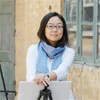
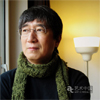 Fei Dawei (General Curator)
Fei Dawei (General Curator)